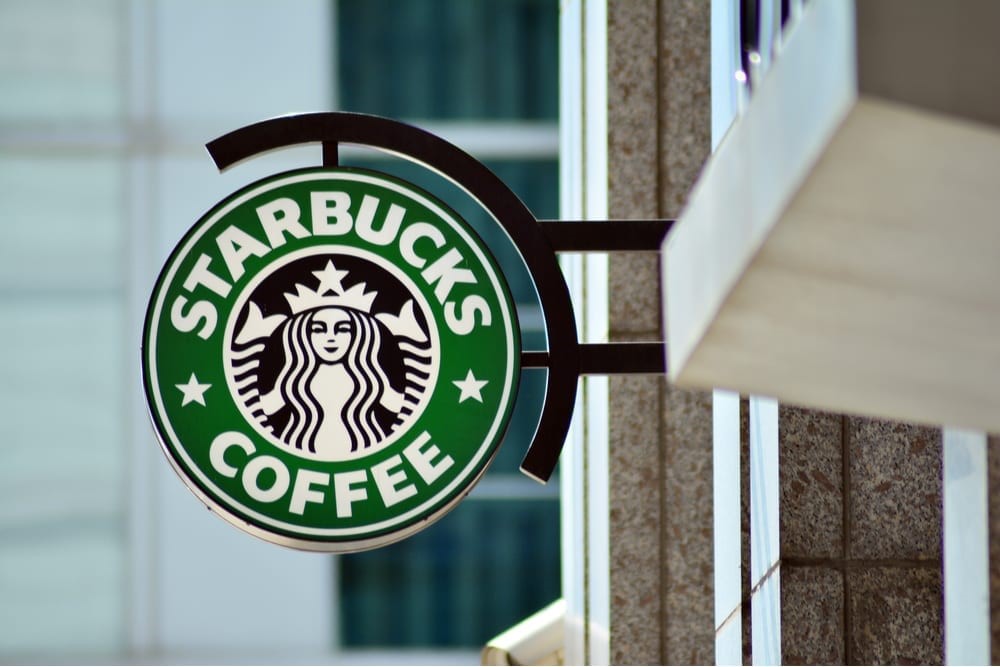To say Starbucks purchases and roasts high-quality whole bean coffees is very true. That is the essence of what they do – but it hardly tells the whole story.
In 1970, college friends Jerry Baldwin, Zev Siegel and Gordon Bowker decided to get into the coffee business. They found a mentor in Alfred Peet, the founder of Peet’s Coffee and he was responsible for bringing custom coffee roasting to the U.S. Therefore, with peet’s help, the first Starbucks opened at Seattle’s famous Pike Place Market on March 30th 1971, a coffee bean shop and roastery getting its name from the book Moby Dick; the chief mate Starbuck. For the first decade, the founders opened five more locations in Seattle. At this point, the customers might have noticed a glaring absence: actual coffee drinks. Starbuck’s initial focus was bringing high quality beans to consumers who were more accustomed to instant or canned coffee, but that changed with the addition of one man. The company hired its first professional Director of Marketing and Sales, Howard Schultz. In 1983, he travels to Italy and returns with an idea; turn the coffee bean store into cafes.
The experiment was a success, and four years later Shultz collaborated with investors and bought Starbucks$3.8 million, by the time he pursued a strategy of aggressive expansion. In 1996, it had opened more than a thousand locations, including its first international cafes in Japan and Singapore.
Starbucks has catapulted from one coffee shop in Seattle to a sprawling $80 billion business over the last 47 years. However, the brand use only 1.19% of revenue for commercials and this is possible because Starbucks use SNS (Social networking service) to advertise. With their social media, Starbucks creates brand awareness through all platforms.
Thanks to the strength of their business communication strategy, Starbucks has succeeded in making their brand recognizable and one of the most remarkable brands in the world. If the question is what makes Starbucks an internationally recognized brand? The answer will be “Consistent messaging, imagery, and branding”. From social media to TV spots and ads, Starbucks use a variety of channels to market their product.
Starbucks focus on creating a personnel connection between their customers, their baristas and their organization. Starbucks is all about connecting with their customers, Men and woman who could, of course, afford Starbucks higher-priced beverages regularly, and giving them a premium experience when they come into the stores of Starbucks so in the mind of customers there is that desire to go sit in the shop, take a good cup of coffee, bring the laptop and be productive and motivated to work. (coscheduleblog, 2018)
Starbucks communicates very little on conventional channels. No signage, no TV or press. However, it is the first coffee chain in the world. The brand doesn’t want to communicate in a top-down way where consumers cannot participate, but rather prefers to bet on social media, a channel allowing interaction with its community with (18.4 M followers) on Instagram, (36 M fans) on Facebook and (11.2 M subscribers) on Twitter.
Among its most relevant digital communication tools, the brand has developed a suggestion website site My Starbucks Idea’. This blog encourages customers to submit ideas to improve the products on offer, as well as the experience they can have. Customers can propose and discuss ideas submitted by the community. Internet users can also vote in favor of the ideas they prefer. Consumers who have come up with their ideas can follow their journey and see their involvement in improving the Starbucks brand.
The blog ‘My Starbucks Idea’ is a real support for co-creation at the service of the brand. In addition to creating a strong brand community, it allows to highlight each individual while serving as market research and global brainstorming.
If the brand is leader in the coffee market, it’s thanks to its community strategy and its digital communication tools. Starbucks work on making their social media channels a place of conversation between their customers and the brand.
Branding and Communication strategy is an art that Starbucks has mastered along their existence, so the commitment and consistency of the branding and giving experience to customers puts the Starbucks brand over the top, and all of this will not be existing without the hard work of the Starbucks team and executives. They span every aspect from the stores’ design and the iconic logo to the description of an Instagram post. They simply make everything looks, sounds and feels like Starbucks with a clean and modern taste. (Richards, 2019)
Effective communication is very important to any organization in so many aspects, it allows to solve problems, motivate the employees and aligns the company’s offer with actual customer demand.
When the communication system is well set, it helps to develop strong teamwork at all levels in order to achieve the organization goals.
Effective communication may contribute to organizational success in many ways, it:
– Builds trust and employee morale
- Helps to create a climate of satisfaction, engagement, loyalty
- Provides clarity and direction
- Promotes team building
- Improves productivity
- strengthens relationships with each other
- Creates greater efficiencies and helps reduce costs
The strategies and tools of Starbucks are definitely the key sources to their well-known image. They managed to be the largest coffee chain restaurant worldwide. However, the constant change of lifestyles and technology. The company needs to be ready for any kind of threats. To do so, there is multiples improvement that Starbucks can work on such as:
- Crew forming: Because the staff are the face of the company and they have direct contacts with client, Starbucks needs to train their employees on communication skills, knowledge of the products and team spirit, so they can deliver a good service and also can transfer information what they observe in the attitudes of clients.
- Culture: Starbucks is an international company which means that they introduce their idea to several cultures. They can try to create new products to serve each culture. And to prove that they are interested in satisfying every customer.
- The variety of choice: Some customers like to buy food with their coffee, and some like to buy tea for their friends or families that don’t drink coffee. So, Starbucks needs to increase their products items to save their customers time, so they don’t have to move to other stores.
- Discounts and offers: Starbucks can introduce new special and occasional offers to their regular customers, such as collecting points for each order to win a prize at the end.
Authors
- SOUHAIL Imane
- ZAGDOUNI Manal
- OUAHDOU Yasmine
- SIJAM chaimae
- SAFIR Chouaib
References
- https://medium.com/@shahmm/how-did-starbucks-build-its-sustainable-competitive-advantage-79ff5eedb5ff
- https://coschedule.com/blog/starbucks-marketing-strat/?fbclid=IwAR3iaFygAHLbkvQNT3cpnrQSqAKHmQ4AdugrVUnF1BcllMD67Z0VMObHnUs
- https://smallbusiness.chron.com/effective-communication-organization-1400.html?fbclid=IwAR1ag3zYJhTYbVgf91tLP0A6kRdvHOKPQAQjVO0Fc7GXpUNnPk9upoQ1ENQ
- https://www.starbucks.com/?fbclid=IwAR1ag3zYJhTYbVgf91tLP0A6kRdvHOKPQAQjVO0Fc7GXpUNnPk9upoQ1ENQ
- https://www.ukessays.com/essays/marketing/communication-objective-and-strategy-of-starbucks-marketing-essay.php?fbclid=IwAR127hYQrnN8R9Dh6btHnQ6WNGnB8maawGzhVA6yr1FBcMWojQL15POx9




